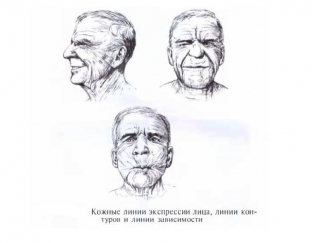The work of plastic surgeons is often compared to the work of jewelers, and this is not surprising, because doctors of this specialty are very responsible for each stage of surgical intervention. The surgeon must evaluate almost every millimeter of the patient's skin, take into account all his wishes and individual characteristics, and model the final result. It goes without saying that in aesthetic surgery, which is aimed at correcting cosmetic defects, there is absolutely no place for ugly scars. How to achieve the formation of an imperceptible thin scar after the – read on estet-portal.com.
What factors influence the formation of thin scars after surgery
Scarring of the skin – this is the final stage of skin wound healing, which is an indispensable element of surgical intervention. The question of how the scar will look after the operation is asked by surgeons almost all of their patients. The final appearance of the scar that forms after excision of various skin lesions depends on many different factors. In order to achieve the formation of a linear thin scar after plastic surgery, it is necessary to take into account many important nuances, the main of which are the atraumatic technique of surgical intervention, as well as the location of the future scar.
Thin scar:
- atraumatic surgical technique helps to achieve the formation of a thin scar;
- how to make incisions to form a thin scar;
- what factors influence the nature of the postoperative scar.
The atraumatic technique of the operation helps to achieve the formation of a thin scar
Atraumatic surgical technique is the basis for the formation of an inconspicuous thin scar. Crushing of the skin and subcutaneous tissue with instruments, their compression or drying leads to tissue necrosis and prolongation of the wound healing period. Of course, neat thin scars in these cases are out of the question. Atraumatic technique involves the use of the correct surgical instruments: a sharp scalpel, scissors, an atraumatic needle, skin hooks and sutures of the appropriate size. Tremor of the surgeon's hands can be reduced by resting your elbows on your own body or leaning on the patient's body. Adequate lighting and the use of optical magnifiers are also important.
How to make incisions to form a thin scar
Usually, an inconspicuous thin scar is formed as a result of incisions that are parallel to the skin lines. These lines are:
- wrinkle lines or lines of facial expression that lie perpendicular to the axis of facial muscle contraction. They are especially pronounced when smiling, frowning, tightly closing the eyes, and so on;
- outline lines – are lines formed at the junctions of various surfaces of the human body, for example, lines connecting the cheek and nose, ear and cheek, breast and chest wall, and so on;
- dependency lines – occur in older people whose skin elasticity is reduced. These include, for example, folds of the "turkey neck" type; and folds under the edge of the lower jaw;
- hairline, more precisely, hiding scars in the hair and eyebrows – it is an effective way to completely hide the postoperative scar.

What factors influence the nature of the postoperative scar
An important role in the formation of scars is also played by the localization of the scar itself. Often in the area of the eyelids, soles, palms, in the area of \u200b\u200bthe mucous membranes and in the vermilion zone, thinner scars are formed that are difficult to notice. On the sternum, shoulders and back, the scars are more pronounced, which is important to warn the patient about. The severity of the scar also depends on the length of the surgical wound: the smaller it is, the less noticeable the scar. In patients with thick skin containing overactive and hypertrophied sebaceous glands, more visible retracted scars form, which is also important to consider. The formation of an imperceptible thin scar is also difficult to achieve in patients with various pathologies of the connective & nbsp; fabrics.







Add a comment